Research Updates
Filters

In the news - Summer 2025
This summer has been quite a big one for gravitational-wave announcements. I’ve managed to make it into the media once or twice as a result!
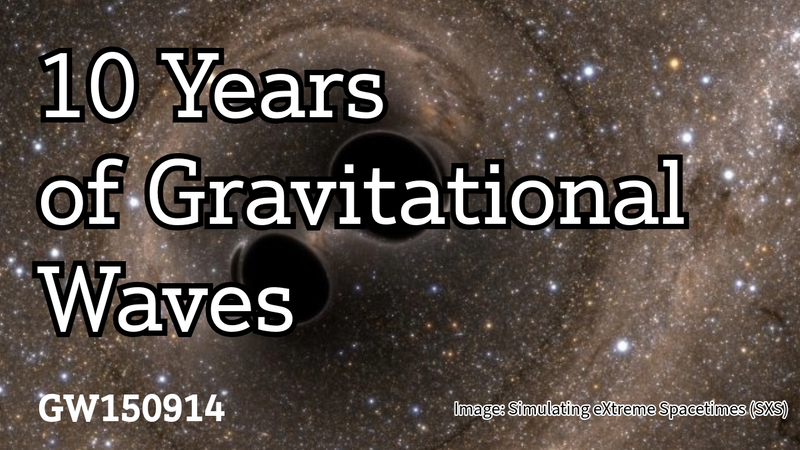
Ten Years of Gravitational Wave Detection
Imagine standing in the Albert Hall, and just before the performance begins, as the orchestra is tuning-up, you hear a perfect, virtuosic Mozart melody coming through the noise. Ten years ago, to the day, the world of astronomy (along with the rest of the world) was shaken as the first gravitational waves ever to be detected were measured with the newly-upgraded LIGO detectors. While they were still tuning-up. The gravitaitonal wave took just a fraction of a second to pass through the Earth, but in its wake it created a new field of astronomy.
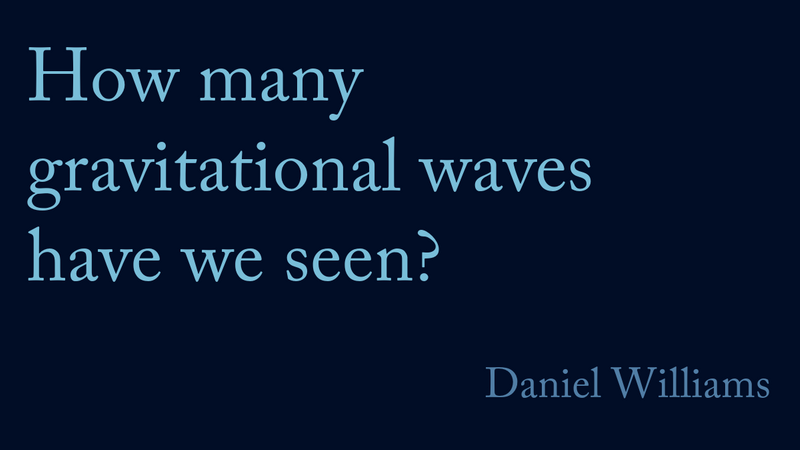
How Many Gravitational Waves have we seen? (Summer 2025 Update)
Earlier in the year I wrote a post which tried to answer the apparently simple question “how many gravitational waves have we detected?”. Well, with today’s announcement of 128 new detections, it’s time to update my calculations.
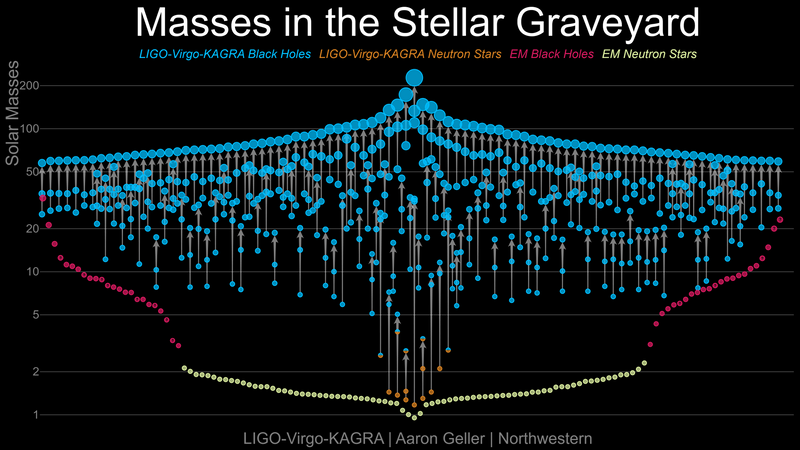
GWTC-4.0: introducing 128 new gravitational waves
Today we’re announcing that we’ve more-than-doubled the number of black hole collisions which we’ve observed using gravitational waves. We’re also releasing an enormous amount of data collected between May 2023 and January 2024 which measures tiny changes in the Universe’s geometry measured by gravitational-wave detectors, which are how we identify these collisions. We collect the information about these collisions into publications which we call a “catalog”, which contain all of the information we’re able to extract from the signals we detect and interpret. This includes things like the mass of the objects which were colliding, how fast they were spinning, and whereabouts in the Universe they were. We’ve published earlier versions of this catalogue before now: GWTC-1.0 has events from the first two observing-runs, GWTC-2.0 adds events from the first part of the third observing-run, and GWTC-3.0 events from the second part of that run. GWTC-4.0, which we’ve released today on the arXiv, is the latest version, analysing the first part of our fourth observing run (O4a). The amount of information in these has become so large that we now split the publication describing the catalog into three parts: an introduction paper, a paper describing the methods used in the analyses, and the results of those analyses. I’ve had the pleasure of leading a team which performed one of these analyses (the “parameter estimation” analysis), which takes signals which have been identified in the data and then works out the properties of the black holes and neutron stars which produced them. It took around 60 of us to do this (and there’s more about that later in this post). I then took-over as the editor of the results part of the catalog publication in June. It’s quite nice to know that I’ve joined a bit of a Glasgow tradition of doing this: my line-manager John Veitch was responsible for GWTC-2.0, and my colleague Christopher Berry for GWTC-3.0. I can only apologise to either of them if I ever thought they seemed to have an easy job!

How Many Gravitational Waves have we seen?
Last week I got an email from a colleague, asking a question which, on the face of it, should have been easy to answer.
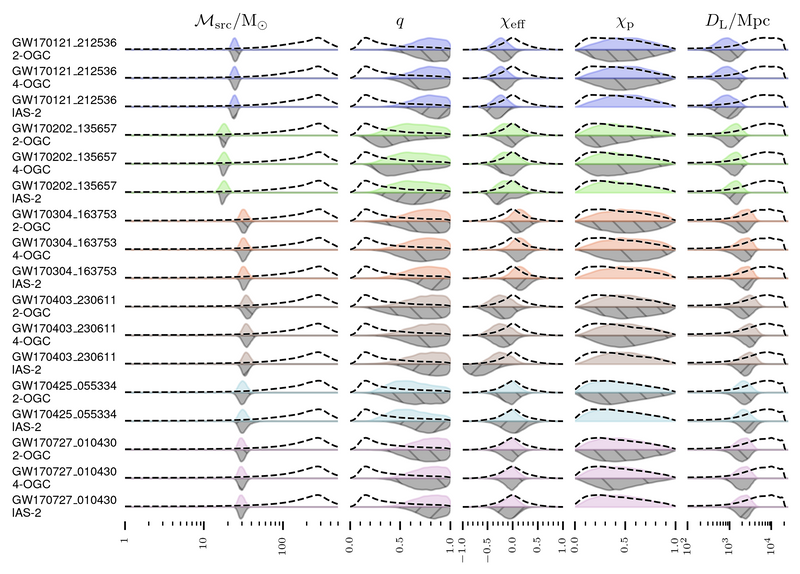
Going Beyond GWTC-3
It started as a nice, simple, short project to test some code I was working on. Things… got out of hand. Today I’ve submitted a paper describing a project I’ve been working on for around 18 months, which was not initially planned as a paper.
minke 2.0.0 alpha 1
I’ve started work on improving the minke codebase to allow it to do things like make compact binary coalescence waveforms and injections, and create framefiles using modern techniques.

asimov 0.5.7
This is a bug-fix release, and doesn’t introduce any new features. Breaking changes

asimov 0.5.6
I’m pleased to announce the release of the latest version of asimov.

Running asimov on a single machine
If you’re looking to try out asimov on your own laptop or workstation you’ll quickly run into a bit of a limitation: asimov, and the codes it works with, are designed to run on a large computing cluster. However, we can get around this by installing a lightweight version of the software used on clusters on your own machine before we try to run asimov.
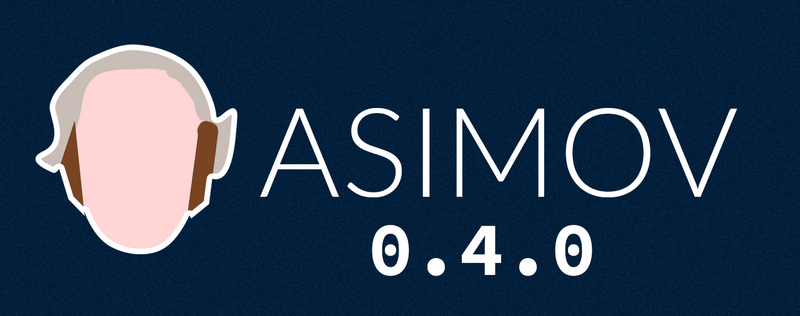
asimov 0.4.0
I’m very pleased to announce that the first release of the 0.4 development and review cycle for asimov!
Mimicking mergers and hyperbolic VItamins
A couple of months ago a student who I’ve been working with for the last year or so put out a new first author paper, which was an exciting moment. This is the first time I’ve had a student publish, so I’m enjoying a little buzz of excitement from that, but Weichangfeng should enjoy all the glory of getting the project finished.
Making Gravitational Waves
This post is part of a series of quick astrophysics explainers I’m trying to put together, partly so that I can link to something when I talk about some of these things elsewhere rather than frequently repeating myself! Hopefully it shouldn’t take more than a few minutes to read, and you’ll come away knowing a little more about gravitational waves.
GWTC-2: introducing 39 new gravitational waves
I remember as a child religiously reading the Argos catalogue; probably sometimes looking for Christmas presents, but often just looking at how many things you could possibly buy from one shop. As I got older I started to wonder how on earth they managed to put such a large catalogue together. Five years after the first detection of a gravitational wave signal, I have a little insight into just how hard the latter process is, and a little more appreciation for how much the Universe has to offer.
Asimov v0.3.0 now available!
The latest release of asimov is now available from our gitlab server, as well as being available on pypi.
Python packaging, configuration files, and elisp adventures
Here is another technical note, this time with some code which I keep rewritting in different projects, so I decided to put it all in one place.
Making injections with Bilby
The last couple of days I’ve spent a fair amount of time trying organising a number of diversity-related things for our upcoming collaboration meeting, and doing more admin than I can pretend to have enjoyed, so today’s note’s going to be a fairly short one, covering some work I did while helping a student using Bilby, the LSC’s new inference library (named, pleasingly, after an animal).
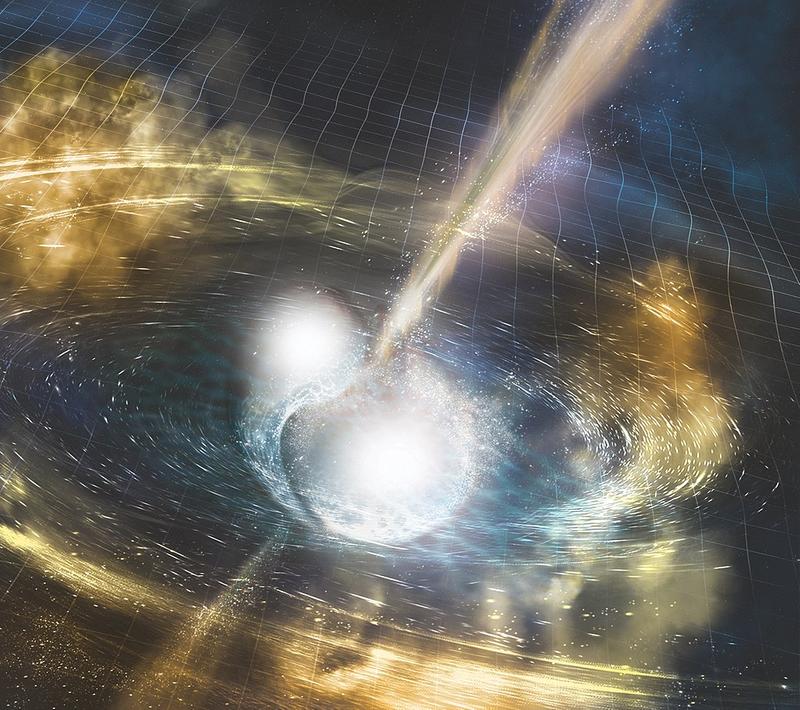
Twinkle, twinkle, big explosion
Today marks a major moment in the development of a project I’ve been working on for some time: me and my co-authors have completed a paper on inferring the opening angles of gamma ray bursts by observing binary neutron star mergers and gamma ray bursts. What does that mean? Well, I guess the point of this post is to explain just that. It should be said, while you can download the paper now, it’s still a pre-print: that means it hasn’t been peer-reviewed yet, so there’s a chance it may contain some mistakes which we’ve not picked up on. So I guess you might argue it’s probably not quite completed.